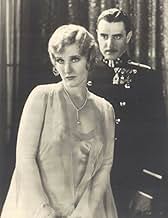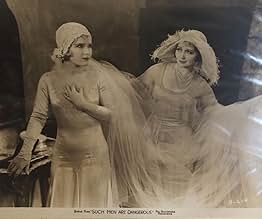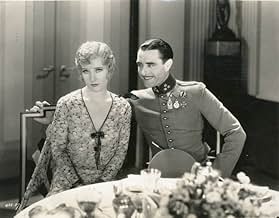Catherine Dale Owen(1900-1965)
- Actress
Lean, fair-haired Catherine Dale Owen, acclaimed as one of the world's
ten most beautiful women of 1925, had the dubious distinction of
co-starring in the film which did most to ruin
John Gilbert's career in talking
pictures. For most of the players concerned,
His Glorious Night (1929) was
anything, but. Provoking first giggles, then raucous laughter from the
audience, Gilbert's excessively passionate declarations of love came
out sounding high-pitched (either due to a problem with his voice or
the sound recording of the time) and became all-the-more ridiculous, as
they were delivered to Owen's icily phlegmatic Princess Orsolini
(though the New York Times described her performance as
'captivatingly aloof'). In combination with the
over-the-top dialogue (by Willard Mack),
the total effect was comical rather than romantic.
Catherine Dale Owen graduated from the American Academy of Dramatic Arts and first appeared on Broadway in 'Little Women' in 1920. She appeared in several other productions during the 1920's, notably 'Trelawny of the Wells'. There was something very 'upper crust' about many of her performances (she did come from a well-to-do family in Louisville, Kentucky) and tended to feel most at home playing society or aristocratic types. In her films, reviewers chiefly commented about her 'uncommon beauty'. She was decorative (but little else) in The Case of Sergeant Grischa (1930). Arguably, her most successful role on the screen was in the first all-technicolour, all-sound musical, The Rogue Song (1930), opposite Lawrence Tibbett. A contemporary review declared "beauty is impersonated by Catherine Dale Owen, whose charms suffice for any picture" (NY Times, January 29, 1930). As it turned out, in the absence of a greater acting range, charms alone did not suffice, and, after another four minor films, Catherine graced the screen no more.
Catherine Dale Owen graduated from the American Academy of Dramatic Arts and first appeared on Broadway in 'Little Women' in 1920. She appeared in several other productions during the 1920's, notably 'Trelawny of the Wells'. There was something very 'upper crust' about many of her performances (she did come from a well-to-do family in Louisville, Kentucky) and tended to feel most at home playing society or aristocratic types. In her films, reviewers chiefly commented about her 'uncommon beauty'. She was decorative (but little else) in The Case of Sergeant Grischa (1930). Arguably, her most successful role on the screen was in the first all-technicolour, all-sound musical, The Rogue Song (1930), opposite Lawrence Tibbett. A contemporary review declared "beauty is impersonated by Catherine Dale Owen, whose charms suffice for any picture" (NY Times, January 29, 1930). As it turned out, in the absence of a greater acting range, charms alone did not suffice, and, after another four minor films, Catherine graced the screen no more.

















